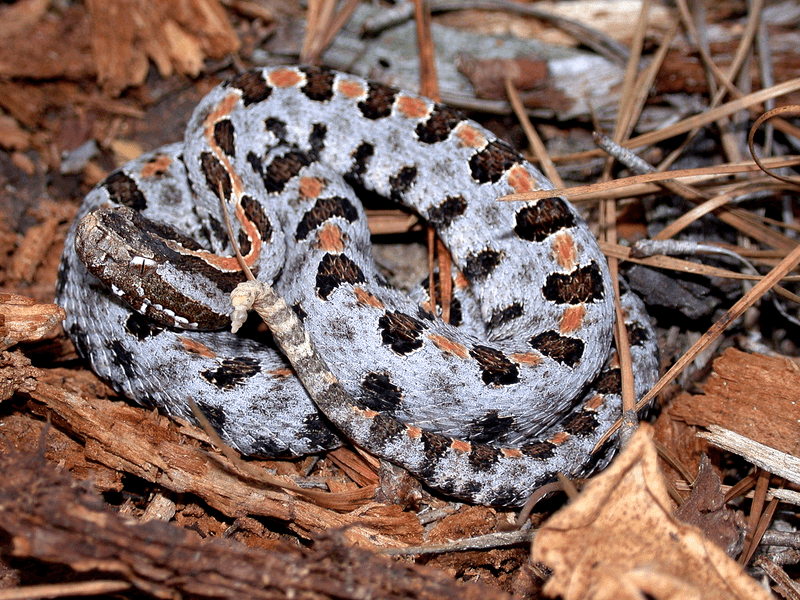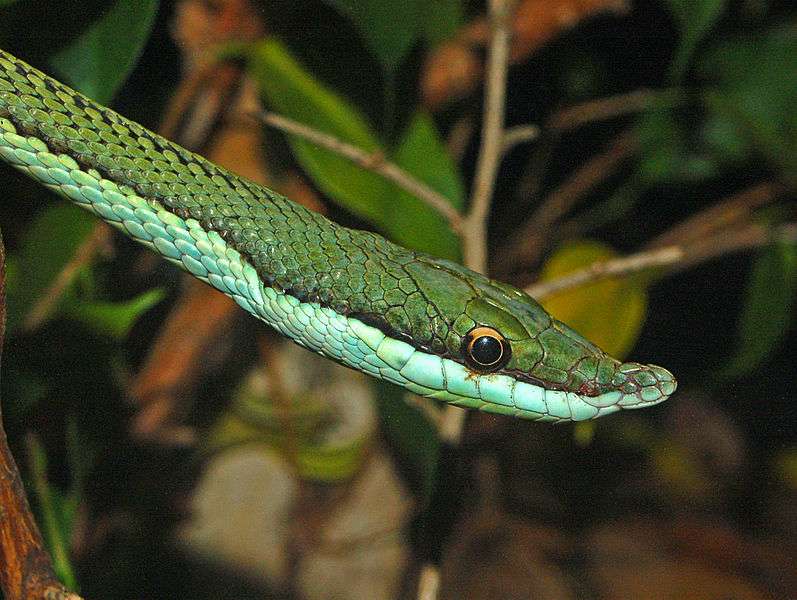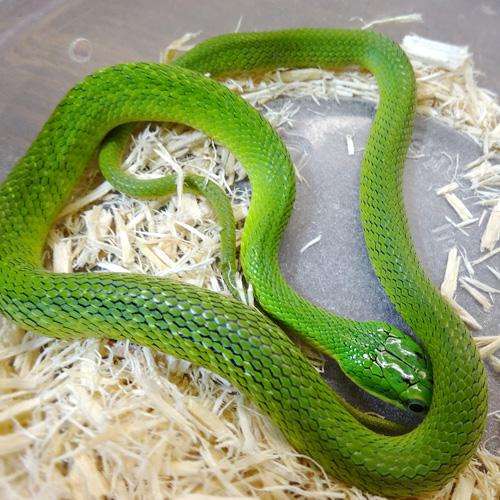
Description:
Scientific name: Sistrurus miliarius
Life span: 20 years
The pygmy rattlesnake, also known as Sistrurus miliarius, is a species of poisonous snake in the Crotalinae (pit vipers) subfamily of the Viperidae family. These snakes have a series of oval or subcircular patches on their dorsum that have rather regular margins. Most of the dots on the flanks are rounded. Often, their belly is grey or a dark cream colour. Although it may be paler or more strongly coloured, juveniles have a colour pattern that is comparable to that of adults, and the tip of their tail is yellow.

Native Region/Habitat
In the Southeast of the United States, pygmy rattlesnakes can be found from southern and eastern North Carolina, to peninsular Florida, and on the west coast to East Texas and Oklahoma. These snakes typically inhabit floodplains, sandhills, flatwoods, and mixed woodlands. They can also be found close to marshes and lakes.
Behavior:
The only time pygmy rattlesnakes communicate with one another is during mating season. They are typically solitary animals. They are nocturnal and are frequently observed in the summertime crossing the road at dusk or tanning themselves. Instead of digging their own tunnels, pygmy rattlesnakes use those made by small rodents or gopher tortoises. These snakes actively pursue their prey, grasping and tossing it around while injecting poison to protect the victim from harm. In addition, they ambush reptiles like skinks by utilizing their tails as baits, as is typical of many other viper species. A little rattle on these snakes produces a buzzing sound that can only be heard from a distance of a few feet. Some people strike violently and with great aggression, while others appear drowsy and make little attempt to rattle.
Care As a pet/In captivity:
Caging: A single adult pigmy may live comfortably in a 40 gallon long reptile terrarium. In a 30 or 40 gallon “breeder” tank is ideal for housing pairs or trios, but keep in mind to separate the animals at feeding time to prevent any mishaps.
Food: Neonates may need a very diverse range of foods, such as mouse pinks, skinks, anoles, small fish, earthworms, insects, and other small snakes, among others. Both children and adults should consume rodents of the proper size.
Water: Water that is both clean and fresh should always be accessible. The majority of pigmies will run away as soon as they are sprayed, but once the spray has stopped, they can be seen exploring their enclosure and slurping up water droplets, thus a portable mister pressure sprayer may be helpful.
Lighting and Temperature: The temperature should be in the upper 80s to low 90s because pigmies enjoy tanning. Low 80s should be the average daily temperature, with a 10 degree dip at night. Make sure the snake has enough room in the cage to adequately regulate its body temperature.
Table





